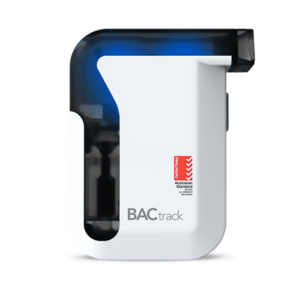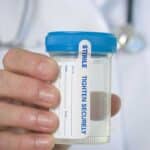AS/NZS 4308: What Does It Mean?
24 September, 2023

Drug testing is a sensitive procedure that needs careful execution to ensure accuracy and appropriateness. In Australia, AS/NZS 4308 is the standard that governs drug testing procedures in urine for workplace and medical use. It provides a clear framework for the collection, transportation, and analysis of urine samples. The Standard refers not only to the procedure but to devices used as well. Therefore, it ensures employers and individuals get the most reliable results following strict guidelines.
In the workplace, urine test is the commonly employed method of drug detection due to its efficiency and convenience. Employers may facilitate this test through a policy as part of their safety measures to prevent accidents and injuries. It also enables them to comply with the safety or regulatory requirements of the industry. This article will give an overview of the Australian Standards for urine testing, the cut-off levels, and the implications of the results.
What is the AS/NZS 4308 Standard?
The AS/NZS 4308 Standard is a set of guidelines and requirements covering the collection, handling, and analysis of urine specimens for drug testing purposes. It was developed by industry leaders and health experts to determine the right practices for drug screening. The Standard covers all aspects, including the quantitation of drugs of abuse, cut-off levels, and the interpretation of test results.
Professionals who will be administering the test need to have the qualification certifying they pass the requirements set by the Standards. This qualification is obtained after completing the HLTPAT005 training course. Aside from urine tests, the course includes guidelines for oral fluid and alcohol breath testing. Moreover, it includes the use of appropriate collection containers and tamper-evident seals.
Furthermore, the Standard includes guidelines for the storage and transportation of urine specimens. Collectors must properly label and document the test samples. Thus, it helps prevent contamination and tampering. Lastly, it addresses issues of privacy and confidentiality. Compliance with this standard is crucial for organisations and laboratories as it guarantees the accuracy and legal defensibility of the testing process.
Types of Tests
- Initial screening: detecting substances in urine samples using rapid testing kits. These kits have undergone rigorous testing and have met the requirements of the AS/NZS Standards for accuracy and precision.
- Confirmatory testing: the results of the initial testing are further analysed using a more sensitive method called Gas Chromatography/Mass Spectrometry (GC/MS). This process identifies the exact drug or metabolite present in the sample.
- Adulteration testing: a test involving checking for any attempts of tampering or contamination with the sample provided. The goal of the test is to detect substances that may have been added to a specimen with the intention of masking drug use.

What are the AS/NZS 4308 Cut-off Levels?
The AS/NZS 4308 cut-off levels are the minimum concentrations of a drug or metabolite, indicating positive test results. These provide reliable results and reduce false positives. The cut-off drug concentrations are a critical factor in the accuracy of the test. It helps maintain consistency in the testing process and various settings or situations.
The cut-off thresholds vary for each type of drug. For example, the cut-off level for cannabis metabolites, such as THC (delta-9-tetrahydrocannabinol), is 15 nanograms per millilitre (ng/mL). Cocaine metabolites have 100 ng/mL, and amphetamine-type substances have 250 ng/mL. This means that if a person’s sample contains more than the specified amount, it would be considered positive for drug use.
On the other hand, opiates have a high rate of 2000 ng/mL. Reaching this level may indicate abuse of illegal or prescription painkillers, such as heroin, morphine, oxycodone, and methadone. Health professionals may inform their patients or employees about the classes of drugs for testing and their corresponding cut-offs.
Significance of Cut-off Levels
It is important for employers and employees to be aware of the cut-off levels to understand how the test works. This knowledge helps in maintaining a safe and drug-free workplace and ensuring no one gets inaccurate results. These thresholds give an allowance for possible incidental exposure to substances, such as passive smoking of marijuana.
These thresholds are based on the understanding of drug metabolism and other factors. Another significant aspect is their impact on the sensitivity and specificity of the test. Setting the cut-off level too low can result in false positives while setting it too high can result in false negatives.

Implications of Non-negative Results based on AS/NZS 4308
Non-negative results are outcomes indicating the detection of certain drugs in the initial screening. This has several implications based on AS/NZS 4308. Firstly, this result means it has reached the minimum level of a substantial amount of drug use. In addition, it can have adverse effects on the body, such as risk of organ damage and heart diseases.
Secondly, getting this result can have legal consequences. In high-risk industries, employers have policies prohibiting the use or impairment of drugs or alcohol during working hours. Thus, it can have a detrimental impact on a person’s employment or future job prospects. Employees may face disciplinary actions, such as suspension or termination, for violation or non-compliance with the policies.
Lastly, non-negative results can have negative impacts on personal or social relationships. It may lead to distrust between colleagues or customers. Additionally, it can cause a strain on communication, leading to conflicts and further problems. It is crucial for individuals and organisations to address drug use or abuse issues promptly to avoid safety risks and legal issues.
Handling False Positive Results
False positives, or when a test result is positive even though the person has not taken any drugs, are not uncommon. It can occur because of incorrect sample collection procedures, interfering substances, or certain medical conditions. If a person believes a test is false-positive, it is crucial to request a confirmation test.
Individuals may also seek medical or legal advice, such as gathering evidence to prove they have not taken illegal drugs. Furthermore, employers should follow certain procedures. It is vital to keep all test results confidential. Before taking any action, ensure the result is final and conclusive.
Conclusion
AS/NZS 4308 is the standard laboratories and workplaces follow for urine drug testing. It lays out comprehensive steps on procedures for specimen collection, detection, and quantitation of drugs of abuse. This test also includes setting cut-off levels of different drugs to determine actual consumption and not just incidental exposure. Setting a threshold helps ensure the results are reliable and reduces the possibility of false positives. Thus, understanding these factors helps build confidence in the testing process.
Moreover, employers and individuals have to be aware of the implications of non-negative results. This outcome indicates the presence of a drug or metabolite. When this occurs, it is essential to take a confirmatory test via the GC-MS method to specify the concentration of the substance. After a careful review, the results of this test are deemed final. This step helps minimise the possibility of false positives, which can have dire consequences for the employer and the employee.






























